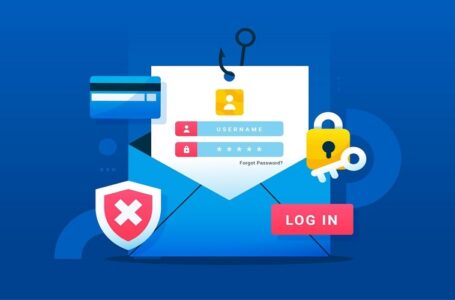RAVER Launches – Revolutionizes Social Media Marketing with AI-Powered Content Creation
B2B marketing success in 2022 relies on 4 elements

If there’s one thing we know about B2B marketing as we move into 2022, it’s that nothing is set in stone. There continue to be uncertainties we must live and work with.
But, if there’s anything we’ve learned that we can take into the new year, it’s that these four B2B marketing data and attribution trends we saw emerging in 2021 will continue to be essential.
Four essential marketing data and attribution trends to focus on for success in 2022
1) Cookieless targeting: When cookies go away, what will marketers do?
“Marketers have viewed cookies as the be-all, end-all feature of digital advertising, which oversells their vitality to both sides of the spectrum,” said Will Kunkel, vice president of marketing at Stirista. “There’s not one magic bullet. It’s really about having the right mix of pieces.”
“There are two corollaries B2B marketers should keep in mind as they plan for a world without cookies,” says Aaron Grote, senior director of identity and attribution products at Stirista. “There’s identity-based targeting and behavioral targeting. You need to understand how to do both without cookies. Don’t put off trying to find ROI in zero-identity data.”
Find a partner that can use signals other than identity to find and buy media. Identity graphs (or ID graphs) are essential here, as they help create quality lookalike audience expansion opportunities.
First-party data is more accurate – but collecting it requires work in the form of strategy and planning. For example, how will you incentivize customers to share data? How will you ensure the data is kept clean?
“If you can do that – and find two or three predictive elements and work with your partners to apply those – you can find success,” says Grote.
2) CTV adoption
As connected TV (CTV) consumption increases while consumers continue to cut the cord on cable services, brands should look at advertising on this channel. Advantages include better targeting, multichannel integration and more accurate tracking. CTV involves a longer-tail process, but collecting analytics is simpler because it’s digital.
“I think one mistake B2B companies can make is treating marketing like it’s a completely different animal than consumer marketing – but you’re still talking to people,” says Kunkel. “At the end of the day, a business audience isn’t watching only business programs – they’re watching what other consumers watch.”
“With the right data, you can match your ads and your CTV buy specifically to the shows and channels consumers watch,” continued Kunkel.
Also consider that audiences have what is known as “banner blindness” – they’re conditioned to avoid digital ads. But with CTV, ads are unskippable.
In addition, CTV offers the highest demonstrable ROI because it’s effective at generating and converting demand.
“There’s huge potential in CTV as a channel,” says Grote. “CTV raises the ceiling by generating demand, not just capturing it.”
3) SEO and advertising
As we move into 2022, integrating SEO and paid advertising into the marketing mix becomes even more vital.
“Views of deep pages, like product details or location pages, signal intent, happen more often than conversions and often happen before conversions,” Kunkel explains. “Because these consideration events have more scale and happen more quickly, measuring and attributing them can give you an earlier view of your B2B marketing’s causal impact, allowing you to optimize your campaign faster and more completely.”
“While SEO isn’t historically a sexy channel for brands, it’s an increasingly important one. Without the right keywords, a site won’t index well,” said Kunkel. “That’s why we see brands investing in SEO audits and agencies on a level they haven’t before.”
“It’s incredibly hard to own popular search terms, as every brand competes for the same keywords,” says Grote.
He suggests producing organic content to augment your paid efforts. As Google now rewards content that reads as though written for people versus search engines, it’s important to approach your content strategy with a more natural style.
“It’s no longer just a keyword salad – but an SEO tilt should inform the strategy,” Grote said.
And what about consideration events? These matter in B2B marketing, as the buying process and sales cycle can take some time. It may be difficult to key in what will put a buyer over the edge, so identifying key consideration events along the way makes a difference.
“Consideration events allow you to move away from those media-level KPIs that often don’t correlate with business results,” explains Grote.
For example, a potential customer may be stuck in a contract with another vendor and not ready to convert.
“Conversion is not the immediate end game,” says Kunkel. “You want to nurture potential customers throughout the cycle for continued engagement.”
4) Attribution
While clients used to accept that some marketing elements didn’t lead directly to sales, now they want everything they do to be attributable. This creates a challenge for marketing teams. How can they get attribution right?
“Especially in B2B sales, we see increasingly how firms are being held accountable,” says Kunkel. “Clients want numbers. They want to know what’s working.”
To that point, Kunkel says B2B marketing teams can do a better job of getting attribution right by setting parameters and being honest from the start about what brands can expect.
“There’s an expectation that for every dollar they spend, there will be some sort of action,” Kunkel said. “They’re looking to have a learnable moment from every marketing element.”
If the agency or vendor is upfront with the client about what to expect – and what’s attributable as well as what’s not – it can lead to more successful campaigns and higher client satisfaction.
In a cookieless world, marketing data and attribution require a fresh approach
In 2022, brands will be tasked with trying new approaches to collect and analyze data – and experimenting with ways to reach targeted audiences – when identity isn’t an option.
By considering these four elements when planning campaigns, B2B marketers can stay ahead of the race to increase brand loyalty and acquire new customers.




